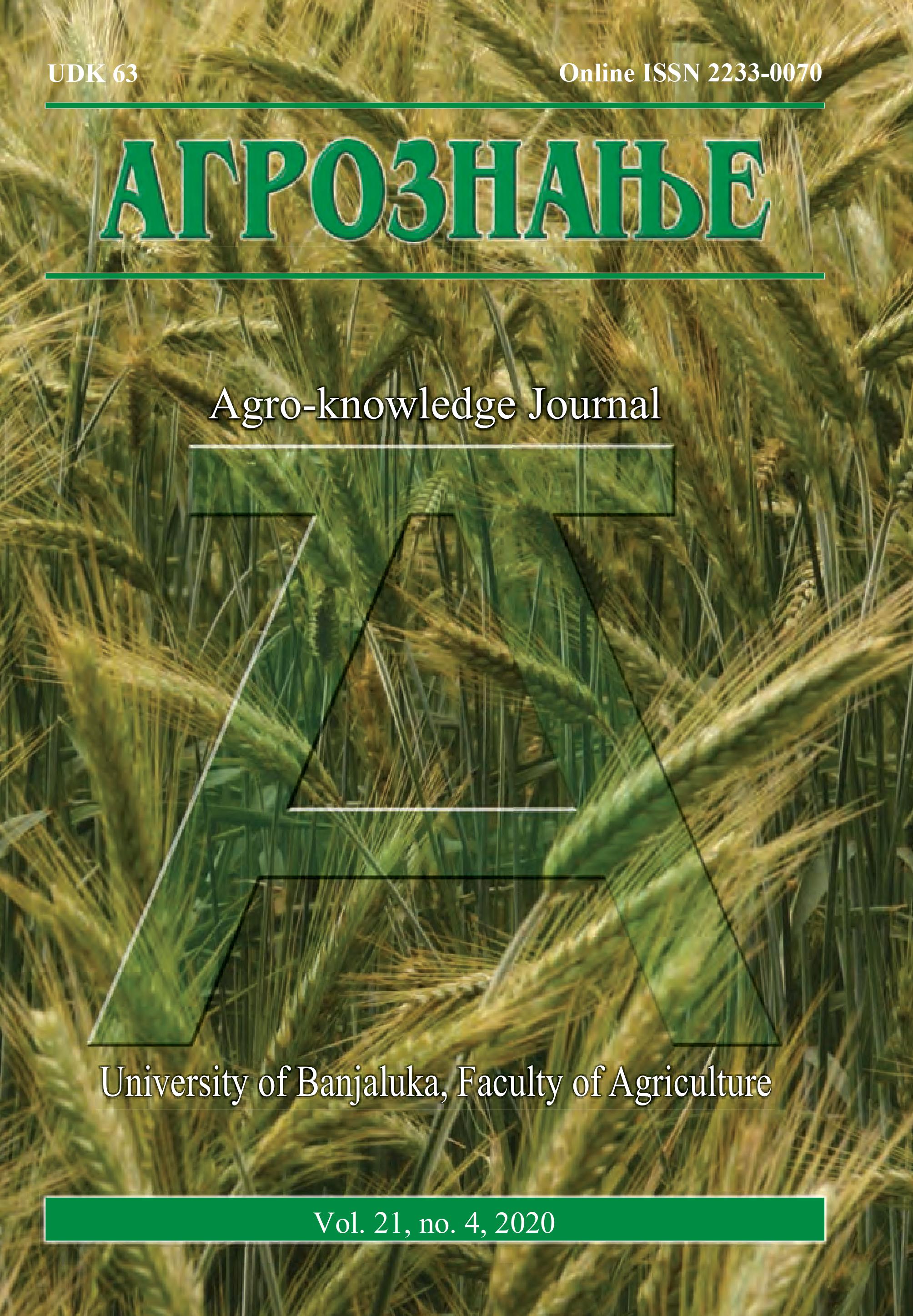Morphological characteristics of Packham’s Triumph pear cultivar fruiting wood
Морфолошке карактеристике родног дрвета крушке сорте Pakams triumf
DOI:
https://doi.org/10.7251/AGREN2004161RAbstract
Pear as a fruit species forms various categories of fruit-bearing branches during its life cycle. Depending on how many years it takes to form a young fruiting wood of pear cultivar from its meristem, there can be an annual, biennial, or perennial organogenesis cycle, which in the first place depends on cultivar’s genotype, the rootstock on which the cultivar is grafted, the applied agricultural techniques in nursery and other conditions. Knowledge of the individual pear cultivars organogenesis cycle is the basis for planning regular and stable yields. In order to determine the structure of a fruiting wood for an individual pear cultivar, it is necessary to make analyses on individual increment categories; what is developing from those increments in the following year. The morphological characteristics of annual increments are analysed (spurs, stems, and long shoots) of Packham’s Triumph pear cultivar, as well as the morphological characteristics of each category’s annual increment bourse-over-bourse, all with statistically significant difference between studied factors and factorial levels. Peckham’s Triumph had higher average length of long shoots in both examining years 2011 (53.63) and 2012 (45.33) and William's cultivar had the shorter ones.
Key words: cultivar, fruit-bearing branch, bourse-over-bourse, organogenesis.

